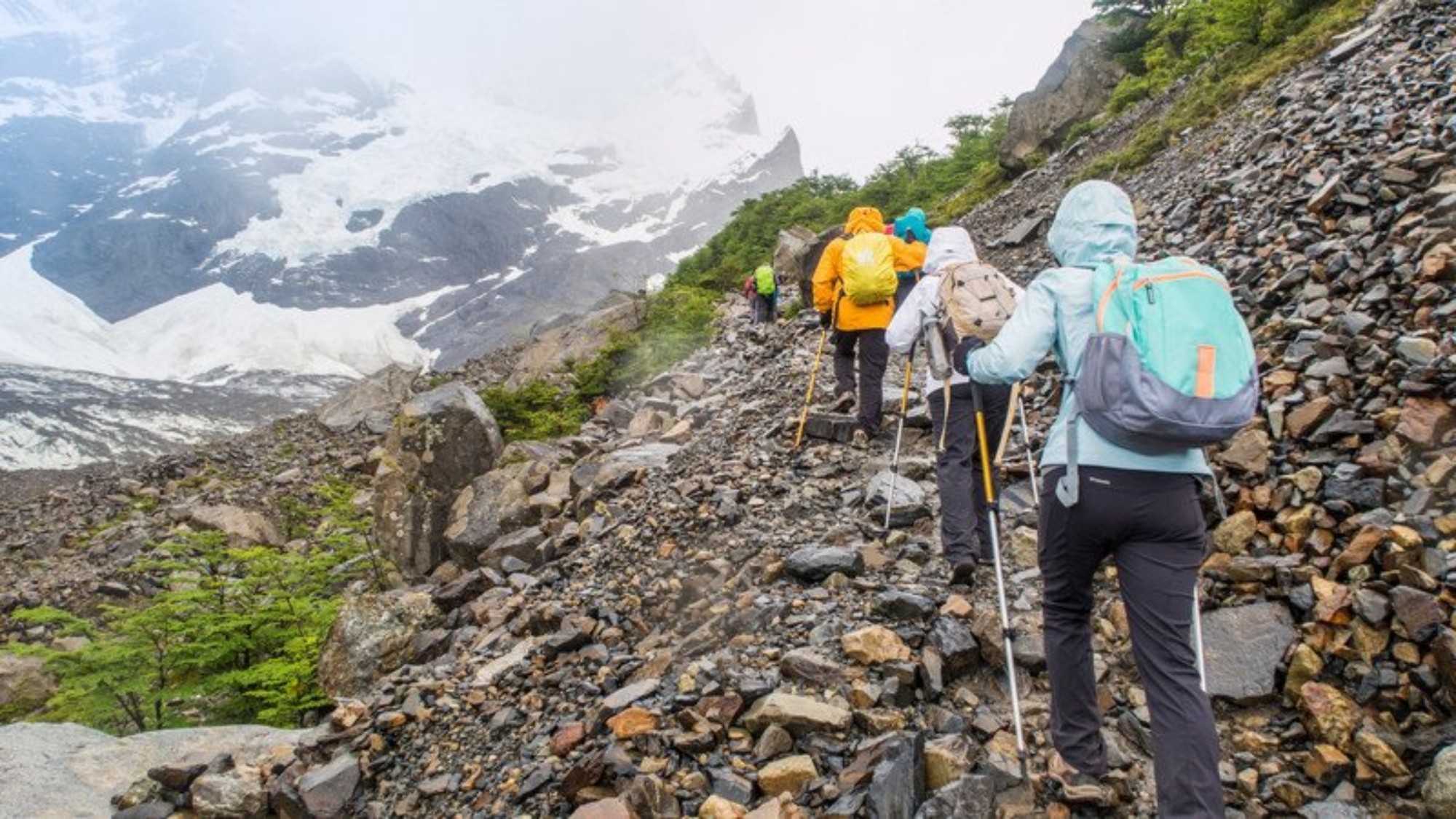Experiential Learning in Nepal
Experiential Learning in Nepal, Olivia Lantry was among the fortunate students who experienced apart of the world few get to see. During the Himalayan Trekking and Temples Program with Experiential Pathways, she trekked through Nepal’s remote regions, discovering some of theworld’s most breathtaking sights—snow-capped Himalayan peaks, vibrant rhododendron forests, and sparkling waterways.
This was Olivia’s fifth adventure with Experiential Pathways the last time this particular program was offered. Now, Experiential Pathways is relaunching this student travel program in Nepal to give more students the opportunity to explore the rich beauty and culture of Nepal.
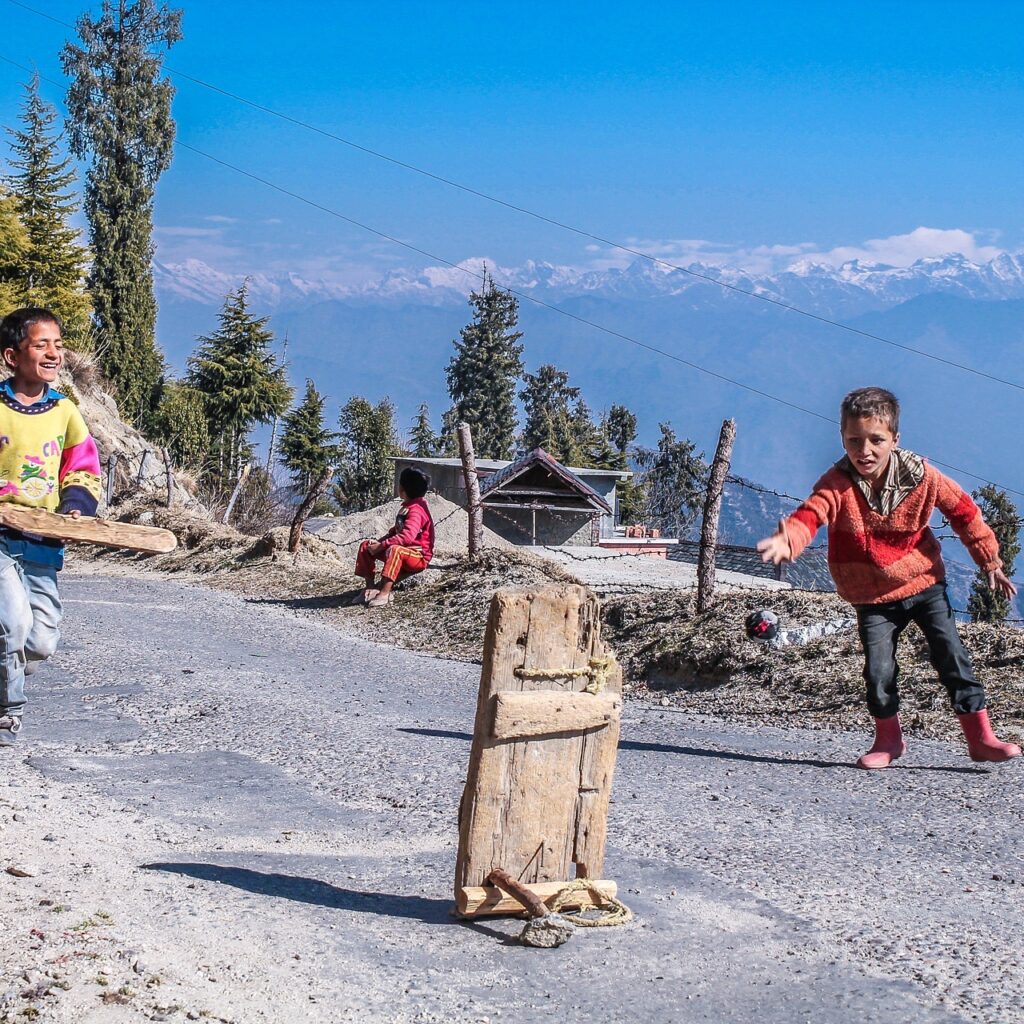
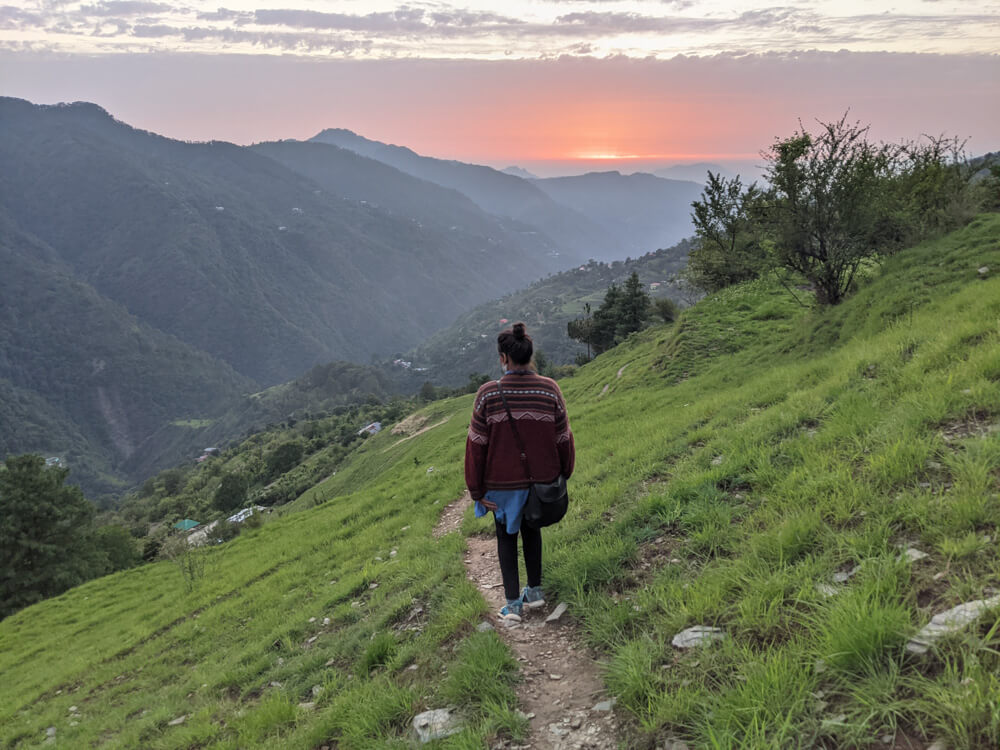
“Out of all my Experiential Pathways trips, this journey was by far the most impactful and will stay with me forever, ”Lantry said. “I not only loved the country but also connected deeply with the people and embraced the ‘go with the flow’ spirit of the itinerary. This cultural immersion program in Nepal was truly unforgettable.
The cultural immersion program in Nepal challenges students on multiple levels—physically, emotionally, and, for many, spiritually. As they delve into Hindu and Buddhist traditions, students gain a deeper understanding of Nepal’s rich cultural heritage. Throughout the program, they explore the vibrant cities of Kathmandu and Pokhara, spend two exhilarating days rafting, enjoy four days of scenic hiking, and immerse themselves in the daily lives of the Nepalese people, gaining invaluable insights into their way of life. This transformative experience is designed to foster personal growth while providing a profound cultural connection.
Exploring Nepal’s Rich Culture & Religious Traditions: A Gap Year Program in Nepal for Teen Travelers
The Experiential Learning in Nepal begins in the vibrant capital city of Kathmandu, named after a wooden temple (Kath –“wood”; Mandir –“temple”). Before embarking on a city tour, teen travelers are introduced to essential cultural etiquette, including walking on the left, removing shoes when entering homes, refraining from pointing at people, and avoiding touching the head or shoulders of others. These cultural dos and don’ts ensure that students have a respectful and immersive experience while discovering the unique traditions and religious practices of Nepal.
After the orientation, students participating in the cultural immersion program in Nepal begin exploring the city, starting with the famous Syambhu Nath Temple, also known as the Monkey Temple. This UNESCO World Heritage site is home to a community of monkeys believed to have originated from the head lice of a deity associated with wisdom and learning.
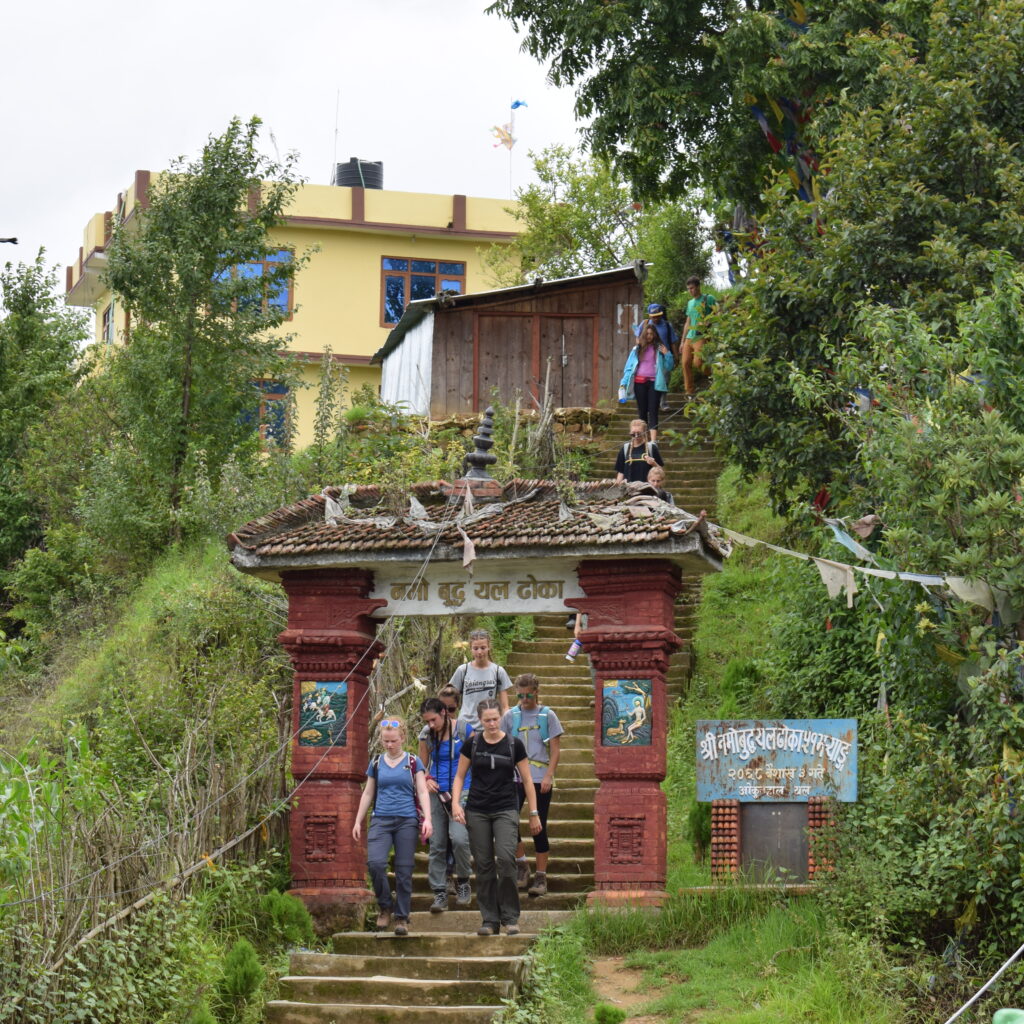
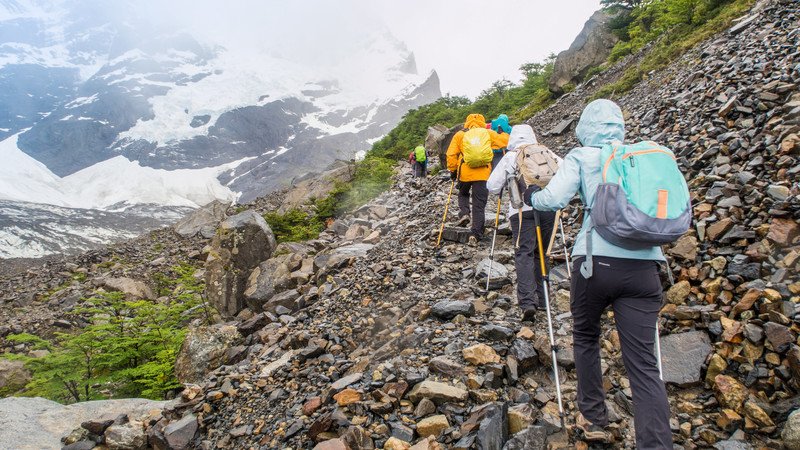
Country Director Sudarshan Deora highlights that the temple is a perfect example of both Buddhist and Hindu architecture and artwork. While the majority of Nepal’s population practices Hinduism, the presence of Buddhism is also significant in the city.
The temple features a 13-tiered structure representing the stages toward achieving nirvana, and a cubical tower adorned with Buddha’s eyes looking in all four directions, symbolizing spiritual awareness. This cultural landmark offers students a unique opportunity to experience the fusion of Nepal’s religious traditions during their journey.
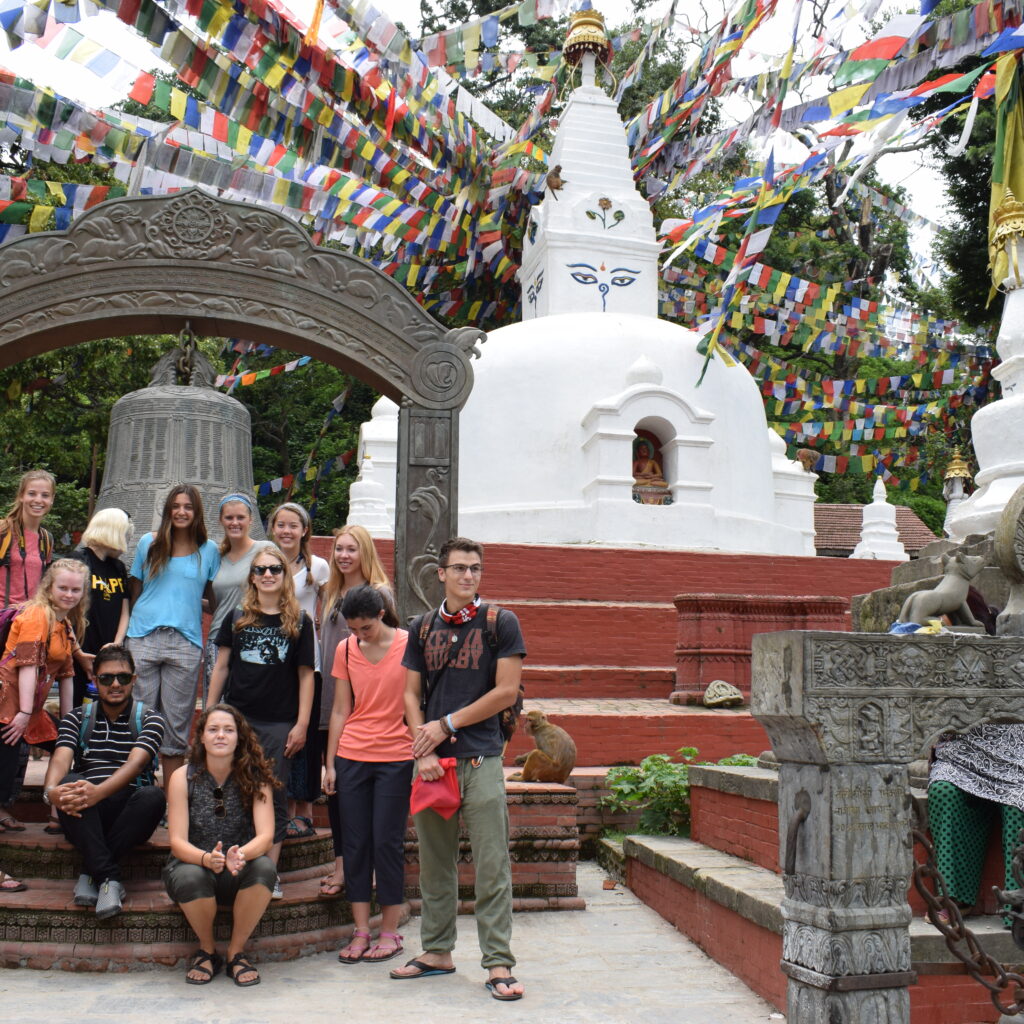

As part of the teen travel program in Nepal, students visit the historic Kathmandu Durbar Square, once home to the palaces of former kings. While exploring this area, students may have the rare opportunity to see the Living Goddess, or Kumari, a child deity worshiped by both Hindus and Buddhists. Chosen through a rigorous selection process, the Kumari is believed to be the earthly incarnation of the Hindu goddess Durga, and a glimpse of her is considered to bring good fortune.
After this cultural introduction to Nepal, students venture beyond the urban landscape for an exciting two-day whitewater rafting trip on the Trisuli River. Following the rafting adventure, they head to Pokhara, Nepal’s second-largest city, to prepare for their four-day trekking expedition, where they’ll continue to immerse themselves in the breathtaking natural beauty and cultural richness of Nepal.
Hiking Through Remote Regions of Nepal: An Adventure in Cultural Immersion
For students passionate about adventure, this part of the teen travel program in Nepal is a highlight. Each day, students spend three to four hours hiking through the breathtaking landscapes of Nepal, with the goal of reaching a remote village where they’ll stay in a traditional tea house—Nepal’s version of a guest home.
As they trek, students gain an authentic view of the daily lives of the Nepalese people. Country Director Sudarshan Deora shares that many students are deeply moved by the hardworking women in these villages, who often carry large bundles of wood or hay uphill for kilometers. “They work tirelessly but are incredibly grateful for what they have, ” Deora notes. This hands-on adventure allows students to connect deeply with Nepal’s culture while experiencing the resilience and warmth of its people.

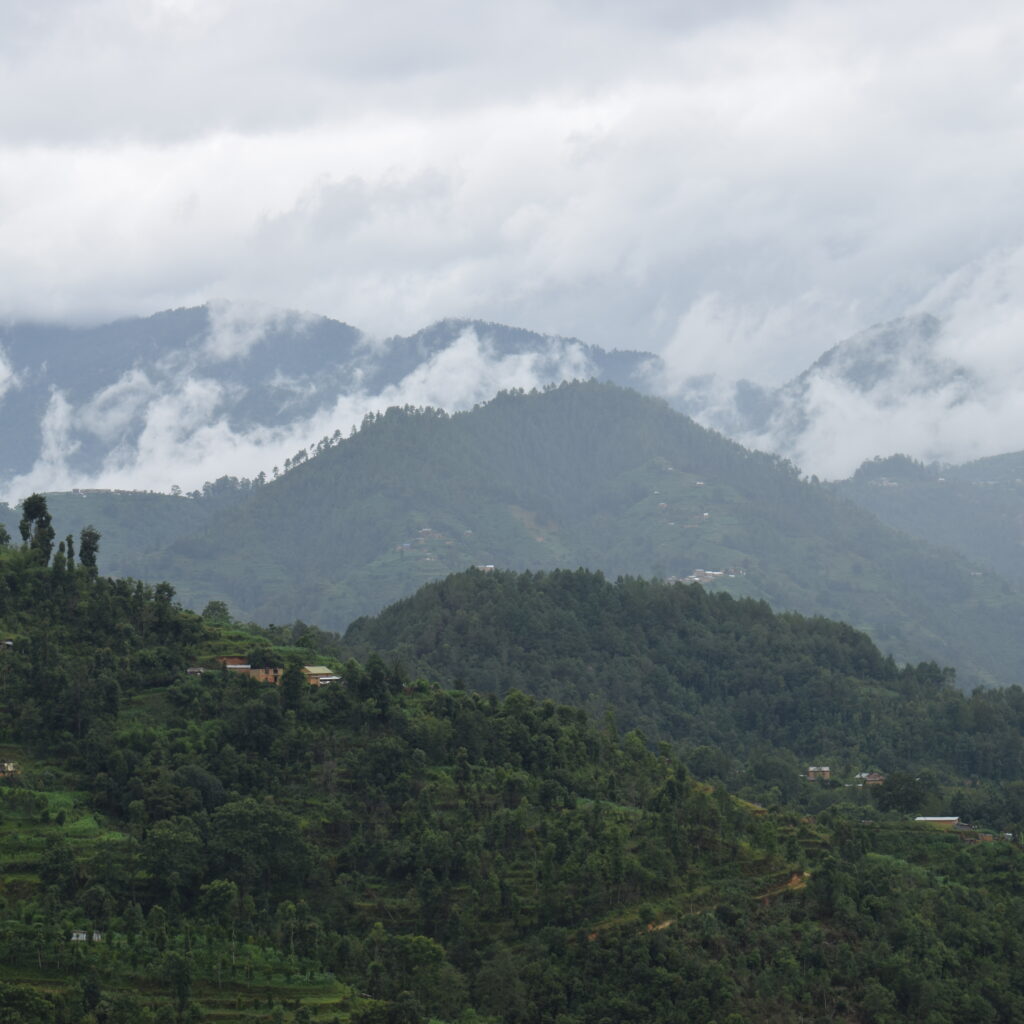
Nestled in the heart of remote regions, the villages students visit during the teen travel program in Nepal are surrounded by river gorges and vibrant rhododendron forests. The rhododendron arboreum, Nepal’s national flower, blooms in brilliant red, adding to the area’s natural beauty. These forests are home to endangered species and medicinal plants, including the East Himalayan Yew, an endangered wild plant used in making the cancer medication Taxol
One of the most unforgettable experiences for students is hiking to Poon Hill, offering some of the best panoramic views of the world’s tallest mountains. At 3,200 meters, Poon Hill is a popular trekking destination, with many visitors taking a three-day hiking route to reach the summit, which is shorter than other longer treks in Nepal. This trek is an essential part of the adventure and cultural immersion experience, providing students with an unforgettable connection to Nepal’s stunning landscapes.
After exploring Poon Hill, students spend their final day of the trek hiking mostly downhill to the picturesque village of Ghandruk. According to Country Director Sudarshan Deora, “It is the most beautiful village in all of Nepal, ” a sentiment echoed by CNN Travel, which named it one of the most scenic towns in Asia. Ghandruk is a perfect example of Nepal’s natural beauty, making it an unforgettable stop in the teen travel program in Nepal. Known for its stunning views and serene atmosphere, Ghandruk offers students a chance to experience the charm of rural Nepal, completing their adventure with a truly scenic and culturally immersive experience.
Ready to Take the Plunge? Exploring Pokhara as Part of the Cultural Program with High School Students
After completing the trekking portion of their journey, students return to Pokhara, a city known for being home to many elite Gurkha soldiers, who serve as UN peacekeeping forces in war zones worldwide. Located on the shores of Phewa Lake, Pokhara is a hub for tourism in Nepal, offering both adventure and relaxation.
As part of the cultural program with high school students, teens have the opportunity to unwind with a rejuvenating massage to recover from their hiking adventures. They can also explore the town by climbing the steps to the Buddhist Peace Pagoda or Temple, where they can take in the serene views and reflect on their immersive experiences in Nepal.
Thrilling Adventures Await: Exploring Waterfalls, Caves, and Extreme Sports in Nepal
As part of the adventure programs with Experiential Pathways, students will visit a breathtaking waterfall and the Madhav Cave, known for its bat population, which holds special significance in Hinduism. While they won’t be entering the cave, students will have the opportunity to explore the Hindu displays outside, learning about the cultural importance of these creatures.
During their visit to these areas, students face an exciting decision—whether to take the plunge during a thrilling bungee jumping activity or try their hand at ziplining the following day. The decision must be made before they even reach the activity venue, making the anticipation even greater. For those ready for an adrenaline rush, a brief video and photo will give them a sneak peek of the heart-pounding adventure that awaits in this unforgettable adventure program in Nepal.
Learning About Hindu Beliefs on Death: A Profound Cultural Experience in Nepal
As part of the student travel program in Nepal, students will visit the Bhaktapur Durbar Square and the renowned Pashupatinath Temple, where they will learn about Hindu beliefs on death and cremation. At Pashupatinath, they witness the sacred Hindu cremation rituals conducted on platforms above the river. It’s believed that cremation here helps the deceased be reborn as a human in their next life, with possessions often burned alongside the body. This deeply emotional experience allows students to reflect on life, death, and spirituality.
“This ceremony was unlike anything I’d experienced before—it was so sacred and peaceful, yet filled with sorrow. It left me with a profound understanding of the Hindu perspective on the afterlife, ” shared Experiential Learning participant Socia Morrish.
This powerful moment marks the culmination of the program, where students come together for a reflective community service discussion. It’s during these conversations that they often realize the lasting impact the journey has had on their understanding of culture and humanity.
As alumna Victoria Curtin noted, “This was one of the best trips I’ve ever taken. ” Through experiential learning, students gain life-changing insights, discovering the true meaning of the greeting “Namaste, ” a lesson they carry with them for life. For more information on traveling in Nepal, explore our program page.

